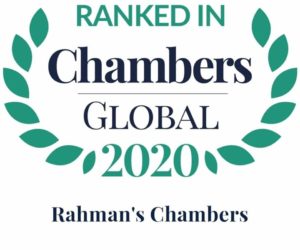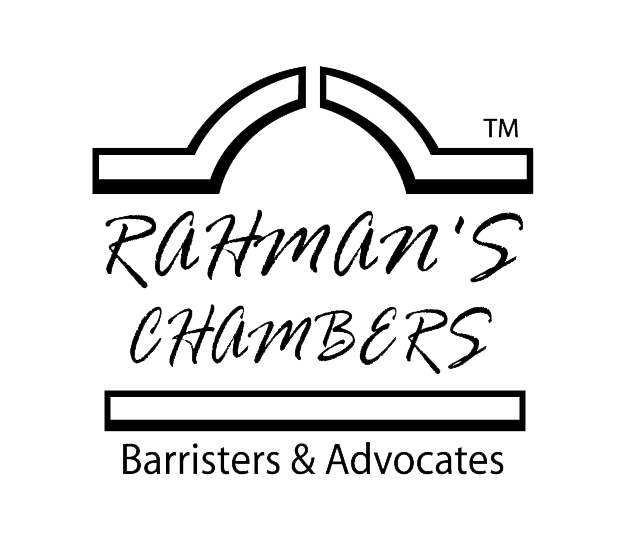Newsletter-Vol 1-2019
COVID-19: COLLISION RISK AT CHITTAGONG PORT, BANGLADESH
 The width of the navigational channel of the Karnaphuli river varies from place to place. The propelling distance from the pilot ground at the outer anchorage to the main jetties of Chittagong port is approximately 11 nautical miles. In the navigational channel, there are three bars namely the Outer Bar, the Inner Bar and the Gupta Bar located at a distance of 14.5 km, 13 km and 7.58 km respectively from the jetties. The depths of water at these three bars primarily control permissible draft for navigation of the vessels inside the port. A minimum of 250 m channel width is maintained. The ship movements generally commence about 4 to 5 hours before the high water of the day.
The width of the navigational channel of the Karnaphuli river varies from place to place. The propelling distance from the pilot ground at the outer anchorage to the main jetties of Chittagong port is approximately 11 nautical miles. In the navigational channel, there are three bars namely the Outer Bar, the Inner Bar and the Gupta Bar located at a distance of 14.5 km, 13 km and 7.58 km respectively from the jetties. The depths of water at these three bars primarily control permissible draft for navigation of the vessels inside the port. A minimum of 250 m channel width is maintained. The ship movements generally commence about 4 to 5 hours before the high water of the day.
“The above relaxation may not be applied efficiently, hence, collision may occur for technical error and for the ship not being seaworthy. On the other hand, due to lockdown and other several measures imposed due to the spread of COVID-19 enough safety and security personnel My not be in duty. Besides, there is a shortage of crew due to travel restrictions imposed. Possible lack of routine maintenance of Karnaphuli channel may also seriously aggravate the risks of navigation in the Channel which is already facing several obstacles.”
The entrance to the river is constantly changing and no vessels are allowed to enter and exit without a pilot. The vessels having a maximum draft of 9.14 m and Length overall (L.O.A) 187.77 m can enter and berth at the jetties. Vessels with a larger than 9.5-meter draft cannot berth in the Port of Chittagong main jetties, due to low water draft, and are anchored in the outer anchorage of the port. Small, lighter vessels then carry goods from those big vessels to the jetties, which are called lightering jetties, situated in the domestic waterways. Currently, container ships ranging from 500 TEU to 1,600 TEU and general cargo vessels from 10,000 dwt to 15,000 dwt can berth in the main jetties of the port.
The CPA has been forced to reduce the draft of the berthing vessels to seven meters instead of 8.5 metres1.T he drafts of the berthing vessels have been reduced by 1.5 meters due to the decline in the depth of water in the river due to lack of dredging.
Chittagong Port Authority (CPA) had undertaken the initiative for dredging the river upstream of the navigational channel of the port installations nearly 22 years back1. CPA had conducted several surveys in the area and found that the channel of the port was facing a danger of quickly losing its navigability. The survey found that the silt in the upstream would impede the operational activities of the port severely.
Then the CPA submitted a project of capital dredging and riverbank protection with jetty facilities in the river from Sadarghat jetty to the third Karnaphuli Bridge. The CPA project got approval in 2005 and the same project had been approved by the purchase committee of the ministry on March 3, 20111. The capital dredging project was approved aiming to increase the navigability of the river, cut the congestion of lighter vessels at the port and reduce water-logging in the port city.
The work was allocated to Malaysian Maritime and Dredging Corporation (MMDC) in 2011 for dredging the riverbed. The Tk 230 crore-project, titled ‘Capital Dredging and Bank Protection with Jetty Facilities in the Karnaphuli River from Sadarghat Jetty to Third Karnaphuli Bridge’, was supposed to be completed by 2013. The Malaysian contractor couldn’t complete it within the stipulated time.
Under the dredging project, the Malaysian firm was supposed to dredge up 3.6 million cubic meters of silt from around two kilometers of riverbed stretching from Sadarghat Jetty to some 500 meters off the third Karnaphuli Bridge and to construct a 2,615-metre marine driveway with bank protection and a 400-meter jetty. The CPA extended the project period several times, but the contractor failed to complete the project. The CPA finally canceled the work order in 20141. Though over 95 percent work of the construction of the jetty and the bank protection was completed before the work suspension, around 38 percent of the dredging was still incomplete1. The contractor filed a writ petition (judicial review) against CPA and obtained an injunction from the court. Later, the Appellate Division of the Supreme Court rejected the HC stay, prompting the MMDC to take the issue to the arbitration board.
The situation as reported in 2016 was that massive siltation in the Karnaphuli River channel hampers the operation in Chittagong port as the dredging work halted. Many chars (shoals) emerged on the riverbed near the riverbank from Karnaphuli Bridge to Barek Building area as the river is being clogged by silt. The navigability of the river has decreased rapidly in recent days affecting the handling of goods at many jetties of the port1. The sand, which was earlier deposited on the riverbanks after dredging work, is pouring into the river again with rainwater. According to a new survey of the port’s Hydrographic Division, around 3.5 million cubic metres of silt remained deposited on the riverbed of the Karnaphuli River.
CP has installed the Vessel Traffic and Management Information System (VTMIS) currently for safe maneuvering at CP channel in March 2014. Later in 2017, the purchase committee of the shipping ministry approved the Tk 2.42 billion (Tk 242 crore) capital dredging p roject1. The same was awarded to the Bangladesh Navy, which later appointed China-based E-Engineering Limited. However, dredging of the river, the lifeline of the country’s economy, is progressing very slowly now and likely to complete in 2022.
It is reported at the beginning of 2020 that Dredging at Karnaphuli River was seriously hampered due to the presence of huge plastic materials, including plastic bottles and polythene bags, in the riverbed. Cutter suction dredger failed to cut the wastes and mud in the Karnaphuli River bed because the layer of plastic materials was found in up to 2 to 7 m depth.
Loading and unloading of bulk cargoes in a significant part of the Chittagong port jetties have remained suspended due to the low water draft. Low water drafts especially in the Karnaphuli River, cause lighterage vessels’ delay in navigation. During the monsoon, navigation becomes more difficult in between April through August due to the presence of strong waves at the time of high tide. The tides are semi-diurnal and the range varies from 1.5 to 4.8 at high water. The tides are termed as A .M and P.M tide.
Karnafuli river channel is “S” shaped. Unfortunately, CP has experienced 69 fatal accidents in the last three decades as per data available in 20151. 47.82% of such accidents were collisions. The factors generally responsible for accidents are: 1. Visual detection: weather, visibility, daylight, local familiarization. 2. Navigational aid detection: radar function, communication equipment, detection, maneuvering path, buoy. 3. Human factors: duties, non-navigational task, other distractions, distraction level, tired, stress level, incapacitated, personnel condition, competence, performance, maneuvering assessment, training. 4. Technical reliability: steering gear capability, engine condition. 5. Support: pilot vigilance, proper manning, lookout, vigilance, communication. 6. Overall: loss of control. 7. Local factors: bend, haphazard anchorage, whimsical movement, turbulence, freshet, current & wind. 8. Collision factors: environmental factor, human error, technical error. 9. Other: ship types, place, country of origin, turn, give way situation, give way.
The reasons for collisions at Chittagong port can be summarised as follows: Loss of control, Human error, Environmental factor, Technical error, Vigilance, Manoeuvring assessment, Proper manning, Give way situation, Ship types, Competence, Communication, Communication equipment, Country of origin and Performance.
Loss of control often occurs due to blackouts often caused when large amounts of debris, plastic materials, etc enter through the sea chest and block strainer causing low seawater pressure and high cooling water temperature resulting in activating the alarm and automated shut down of the engine control system and generator. Human error, performance and vigilance as identified are all associated with human intervention needed in an emergency situation e.g. collision situation. The same may be lacking. Hence VTMIS data on safety would be much helpful if the emergency response team works. Maneuvering assessment can easily go wrong in the narrow areas e.g. inner bend where Naval Berths are located and in waypoint entry particularly for failure to maintain required depth by dredging that allows for safe navigation.
High tidal benefits often do not work for many vessels due to the presence of strong waves at the time of high tide in Monsoon. Hence, for better navigation in order to meet the pressure, channel depth, without any tidal benefit is required to be maintained.
It is stated that the inner bend where Naval Berths are located and waypoint entry of the river is the riskiest zones and historical data also states that 2.91 collisions/k and m occur at bends. At waypoint, 04 vessels turn by 30°.
At the Chittagong anchorage, the vessel faces vertical movement due to strong high waves causing dragging of the anchor while at outer anchorage1. Dragging of anchors due to strong underwater current at the outer anchorage, particularly by vessels drawing a deeper freshwater draft, is a common occurrence. In some instances, vessels attempting to cross the bow of an anchored vessel at close range have been involved in collisions. Common factors behind the incidents include incorrect use of anchoring space and underestimating local conditions such as wind, tides and currents. A ship at anchor can be quite vulnerable if the holding ground is fair and the anchorage is exposed to high winds. Such conditions may cause the vessel to yaw wildly about the anchor and break the anchor out of the sea bed.
The Department of shipping by issuing circular cautioned about the navigational risk to captains and surveyors during pandemic after a collision was reported in Indian involving Bangladeshi vessels carrying cargo under inter-country trade or transit under Protocol on Inland Water Transit & Trade (PIWTT). 1Careful and strict review requirements were imposed for proposing extensions of certificates in compliance with IMO circulars. Maintaining Classification requirements/ standards by the Department of Shipping in Bangladesh is a definitely challenging work at this time.
Latest IMO COVID-19 circular requires that all ships must be surveyed and verified by officers of the flag State Administrations or their recognized organizations (ROs)/ recognized security organizations (RSOs) / nominated surveyors so that relevant certificates can be issued to establish that the ships are designed, constructed, maintained and managed in compliance with the requirements of IMO conventions, codes and other instruments. Most IMO instruments contain requirements regarding the extension of the period of validity of a certificate, including SOLAS and MARPOL and associated codes mandatory under these Conventions, as well as the Load Line, B WM,1 STCW and STCW-F Conventions.
As per IMO circulars, the extension of the validity of certificates beyond the statutory maximum should only be considered in extraordinary circumstances and if no other alternative, such as the issuance of a short-term certificate with an appropriate risk-based survey, exists. This system of survey and certification forms the backbone of the maritime safety and security and environmental protection regime of the Organization and it is critically important that ships remain subject to the existing statutory regime to the greatest extent possible. Decisions concerning the issuance of short-term certificates or the extension of statutory certificates are the responsibility of flag States.
As per IMO guiding principles, in exceptional circumstances and/or force majeure considerations, routine compliance with established statutory parameters in I MO conventions and classification rules may not be possible, and adequate solutions to assess the level of safety and environmental protection are required and risk s are mitigated.
The guiding principles also state If the history of the ship’s performance in port State control MOUs, class status records, the status of the ship in RO’s fleet quality monitoring records and other relevant evidence, identify concerns which cannot be properly addressed with mitigating actions such as service and/or navigation restrictions, ROs should adopt a safety-first approach and not recommend to the flag State the extension of certificates or the extension of endorsement of certificates and the postponement of surveys.
The Department of Shipping issued circular to the effect that while all reasonable efforts should be taken to ensure that statutory certificates are kept valid, Recognized Organizations (ROs) are authorized to grant an extension after obtaining an undertaking from the master of the vessel for the satisfactory condition of the vessel and verification of past survey/audit/inspection records, as deemed appropriate. While extending the validity of the certificates Recognized Organizations (ROs) shall take into consideration IMO Circular.
The above relaxation may not be applied efficiently, hence, a collision may occur for technical error and for the ship not being seaworthy. On the other hand, due to lockdown and other several measures imposed due to the spread of COVID-19 enough safety and security personnel My not be in duty. Besides, there is a shortage of crew due to travel restrictions imposed. Possible lack of routine maintenance of Karnaphuli channel may also seriously aggravate the risks of navigation in the Channel which is already facing several obstacles.
In case a collision actually occurs, the remedy ultimately lies with the Admiralty Court of Bangladesh. It is a tortious remedy for loss and damages for life and/or property. The question s remain: can you choose a different forum other than Bangladesh applying private international law? Whether a suit for limitation is available under Bangladesh law? If so, what is the maximum limitation amount of the shipowner? Whether the law is in line with the Limitation convention? Is it possible to refer the dispute to arbitration? Is there any precedent of Bangladeshi court awarding limitation amount? What is the test of establishing a limitation suit successfully? What should the nature of the suit be filed by the shipowner to avail such relief?
There is no simple answer to such queries. It depends on each case.
In conclusion, it can be said that much awareness initiatives are required to introduce businessman with the corporate opportunities which are available in our laws.
Bibliography & Sources:
- Chittagong City Corporation website
- Chittagong Port Authority website
- The Journal of Commerce, NY
- The Financial Express, Bangladesh
- The Asian Age, Bangladesh
- The Financial Express, Bangladesh
- ibid
- The Daily Sun, Bangladesh
- ibid
- The Daily Star, Bangladesh
- The Asian Age, Bangladesh
- The Daily Sun, Bangladesh
- The Independent, Bangladesh
- Collision Risk Analysis of Chittagong Port in Bangladesh by Using Collision Frequency Calculation Models with Modified BBN Model Mohammad Ehsan Khaled*, Yasumi Kawamura Ocean-Space Engineering, Yokohama National University,Yokohama, Kanagawa, Japan the International Society of Offshore and Polar Engineers (ISOPE)
- The Financial Express, Bangladesh
- dredgingandports.com
- Collision Risk Analysis of Chittagong Port in Bangladesh by Using Collision Frequency Calculation Models with Modified BBN Model Mohammad Ehsan Khaled*, Yasumi Kawamura Ocean-Space Engineering, Yokohama National University,Yokohama, Kanagawa, Japan;the International Society of Offshore and Polar Engineers (ISOPE)
- ibid
- ibid
- ibid
- Gard, website
- Safety4sea, website
- Department of Shipping, Bangladesh 1International MaritimeOrganization
- Ibid
This Article was published by the Singapore Chamber of Maritime Arbitration (SCMA) and can be found here.
Author

 The article was published by Singapore Chamber of Maritime Arbitration (SCMA) and can be found here.
The article was published by Singapore Chamber of Maritime Arbitration (SCMA) and can be found here.





Leave a Reply